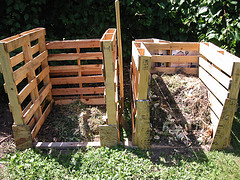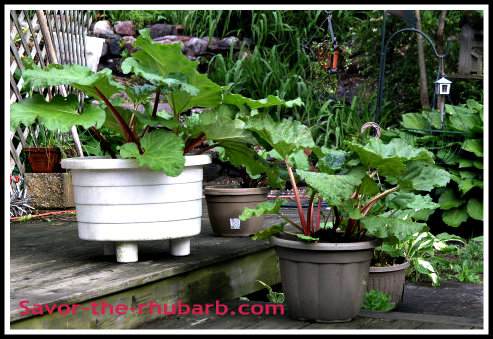How To Winterize-Garden-Soil
Promote Healthy Conditions
for Spring Growth
If you don't winterize-garden-soil over the Autumn months, you will most certainly be in for some heart-ache come Spring-time.
You've put in so much effort over the spring and summer months, but now that winter is coming, there are general things you can do to preserve the fruits of your labor and prepare for the cold weather.
And this isn't just for the rhubarb. Chances are, your rhubarb probably sits in a space surrounded by or very near to other plants too. Whatever happens to them, can happen to your rhubarb and the space it lives. So, it's not just about covering up the rhubarb and forgetting about the rest.
You want to keep the garden area as a whole healthy and well enough to be very productive in the Spring. It just makes good sense because at this time of year, plants are at risk for diseases from cold autumn rains and mold activity. Eventually they'll die, not just "sleep" and that's the difference.

Winter is a beautiful season, but it sure can wreak havoc on your property especially gardening areas.
So, when to start preparing for the cold?
When you see the change on the color of the plants. Leaves will begin to drop and that's usually the clear sign to start putting your garden to bed.
If you can, dig out the plants that are meant to be dug out.
Rodents will have a hey-day digging it up themselves to eat, so dig them out. Put them into your compost to mix in for good nutrition for next year.
Rake up leaves. You still need air and water circulation, so throw them into the compost unless they are diseased.
If the leaves or any of your plants are diseased, throw them away and don't contaminate your compost pile.
Be sure to check your plants that are remaining for this.
You can opt to leave them out on top of the soil until they have dried out. Once that happens though, till them into the soil so that the garden can absorb this food for itself.
Tilling them in is much better.
It's not that easy for the garden to absorb it thoroughly when they are just laying there on top. This helps the soil to warm quicker too when Spring arrives.
Place a good covering of mulch to protect from frost and very icy temperatures. Sawdust, shredded leaves, pine-needles and straw is good protection for roots and beds.
Bring non-winter plants indoors if you have a space for them, preferably a dry and cool spot. Give them water over the winter, but be careful not to drown them because they will only rot. Get them back outside in the Spring in the sunlight as warmer temperatures start again.
If you are dealing with bulbs, make sure they can stand the winter elements and plant late in the Autumn.
Weeds grow quite a bit during the Autumn months, so keep up the weeding as much as possible. Weeding continuously after the summer is a good way to start to winterize-garden-soil. Many of us just quit in August.
You will save yourself so much work come Spring.
If you fertilize in late Fall, you may encourage seedlings that in no way later can survive through the frost and snow.
Fertilize in early Fall, or just wait until the spring-time.
These are the good reasons to winterize-garden-soil. When it's time for the rhubarb to pop up in Spring, the surrounding environment will be free of disease and preferably full of good nutrition to thrive in.
Leave winterize-garden-soil, Return to Rhubarb Harvest









